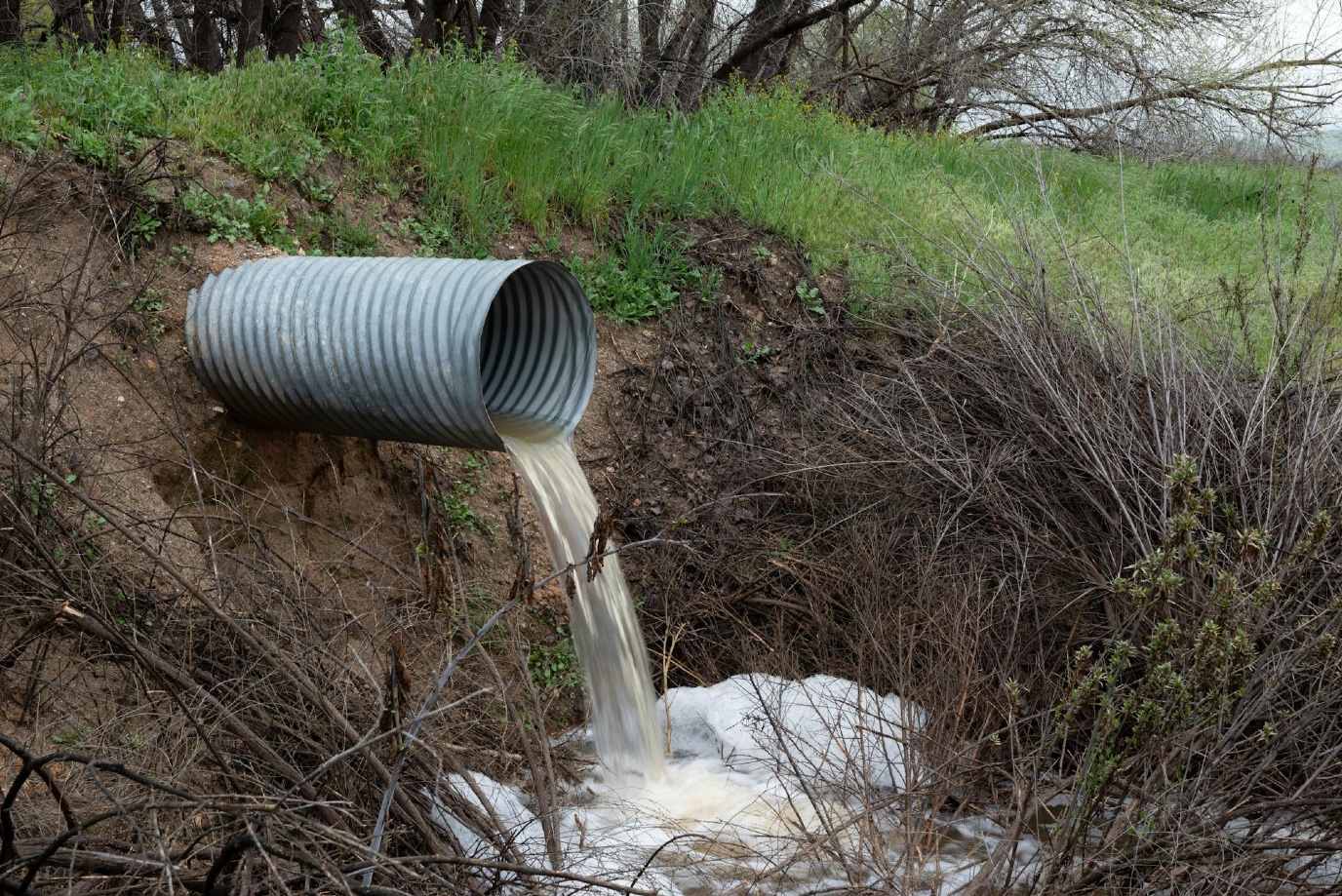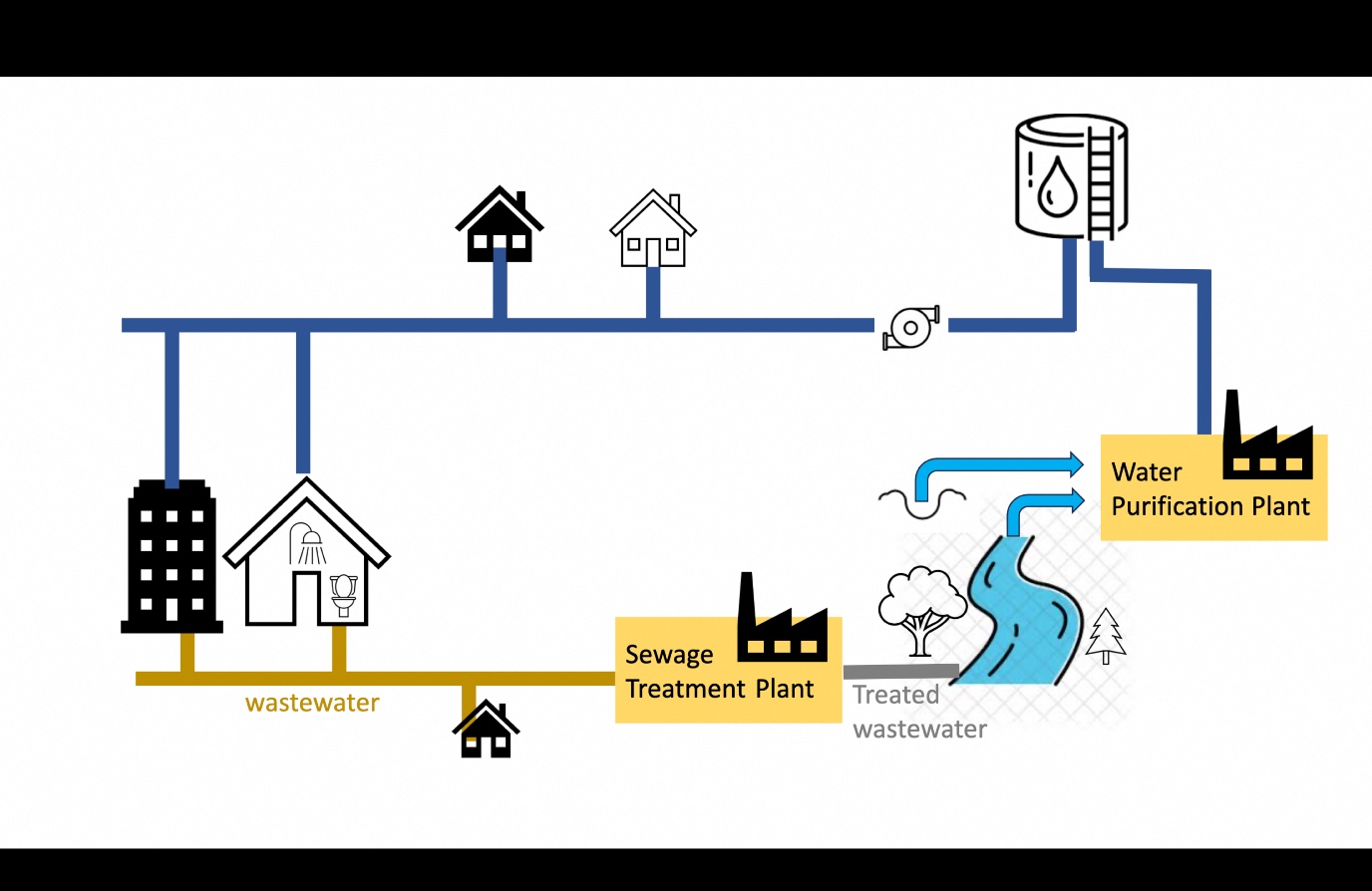Waarom laten we ons regenwater eigenlijk weglopen in het riool?

We zullen anders om moeten gaan met water, gezien de huidige driedubbele planetaire crisis . En dat betekent ook: geen vervuild water dumpen in de natuur. Toch zijn waterschappen soms genoodzaakt om rioolwater onbehandeld te lozen. ‘Dan komt dat dus in een kanaal terecht, of in een meer,’ vertelt informaticus Dilek Düştegör. Ze werkt samen met gemeentes en waterschappen aan computermodellen die moeten helpen om die afvalwaterstroom zo goed mogelijk te beheren.
FSE Science Newsroom | Charlotte Vlek
‘Het grootste probleem in Nederland is dat er verschillende partijen bij het rioleringssysteem betrokken zijn,’ vertelt Düştegör. Waterschappen zijn verantwoordelijk voor het zuiveren van ons afvalwater: hun belangrijkste doel is de waterkwaliteit garanderen. Invloed op de toevoer van water via het riool hebben ze niet: dat wordt door gemeentes beheerd, die juist als doel hebben om het water snel af te voeren. Die twee doelen kunnen elkaar nog wel eens in de weg zitten. Düştegör: ‘Ze zijn soms niet te combineren. Bovendien praten de organisaties niet met elkaar.’
Daarom bouwt Düştegör digitale modellen waarin ze het rioleringssysteem precies nabootst: zogenaamde digital twins. Met behulp van deze modellen kunnen beide partijen bekijken hoe ze hun doelen het beste kunnen bereiken. In het bijzonder zal Düştegör twee aparte digital twins bouwen: één die metingen van de rioolwaterstand in kaart brengt voor de gemeente, en één die waterkwaliteit in de natuur monitort, voor de waterschappen. Het idee is dat die twee modellen uiteindelijk met elkaar kunnen ‘praten’, om zo tot een gemeenschappelijke beste oplossing te komen.
Een gemeente vol sensoren

Een groot voordeel van zo’n computermodel is dat je ‘wat-als’ scenario’s kunt doorrekenen
Düştegör werkt samen met de gemeente Heusden, vlakbij Den Bosch, waar op allerlei plaatsen in het riool sensoren zijn geplaatst. ‘We maken gebruik van deze sensormetingen in combinatie met het grondwaterpeil en de weersvoorspelling,’ legt ze uit. ‘Op basis daarvan voorspellen we het waterniveau in de riolering, zodat we kunnen onderzoeken hoe overstromingen te voorkomen zijn.’
‘De gemeente kan op basis van onze simulatie bijvoorbeeld besluiten op welke plaats een klep geopend moet worden om te zorgen dat het water goed doorstroomt.’ En ja, soms betekent dat dat er geloosd moet worden. Dat is natuurlijk niet wenselijk voor de waterkwaliteit in de natuur, en het model van de waterschappen maakt dat effect duidelijk zichtbaar. Door die twee modellen samen te brengen, hoopt Düştegör op meer structurele verbetering.

‘Een groot voordeel van zo’n computermodel is namelijk dat je ‘wat-als’ scenario’s kunt doorrekenen.’ Wat zou het effect zijn van een hele middag aan hoosbuien? En als we nu geld investeren in een apart systeem om regenwater af te voeren uit de straten, zodat die hoosbuien niet de hele riolering overbelasten, zou dat niet de moeite waard zijn? Düştegör: ‘Voor waterschappen zou het gunstig zijn om regenwater en afvalwater te scheiden. Maar ja, momenteel hebben ze daar weinig over te zeggen.’
Op vrijdag 21 maart 2025 organiseert de Wubbo Ockels School for Energy and Climate een evenement over klimaatadaptatie en water , een van de belangrijkste onderzoeksonderwerpen van de School. Centraal staat op deze dag de vraag: Hoe kunnen we de urgentie van en mogelijkheden voor klimaatadaptatie regionaal en (inter)nationaal benadrukken, en hoe kunnen (nieuwe) vormen van communicatie ons hierbij helpen?
Dit artikel is de derde in een reeks over wateronderzoek aan de Faculty of Science and Engineering van de Rijksuniversiteit Groningen.
Lees de andere artikelen van deze reeks hier:
Veranderende weersomstandigheden hebben invloed op van alles en nog wat, van energie en voedselvoorziening tot natuurrampen zoals overstromingen. Verschillende wetenschappers van de Faculty of Science and Engineering werken aan modellen om grip te krijgen op die veranderingen en er voorspellingen over te kunnen doen.
Biotechnologen Gert-Jan Euverink en Tom Sleutels werken aan betere zuivering van rioolwater, zodat er minder vervuilende stoffen in het oppervlaktewater worden geloosd.
Genoeg drinkwater is niet het enige dat ertoe doet, toont milieuwetenschapper Winnie Leenes: onze zorg zou juist moeten liggen bij het totale zoetwaterverbruik, en hoe dat verbruik het ecosysteem beschadigt.
Meer nieuws
-
19 december 2025
Mariano Méndez ontvangt Argentijnse RAÍCES-prijs
-
18 december 2025
Waarom innoveren, en voor wie?
-
17 december 2025
Ben Feringa wint Feynmanprijs
